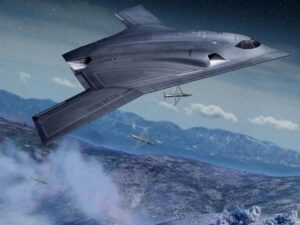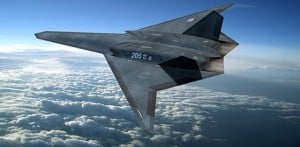Kendall, LaPlante Complete Long Range Strike Bomber Review: EXCLUSIVE
Posted on

Frank Kendall
PENTAGON: The Pentagon’s top acquisition official, Frank Kendall, and the head of Air Force acquisition, Bill LaPlante, have just completed a review of the Long Range Strike Bomber program.
“We looked at the design to make sure it’s at the level of maturity it’s supposed to be,” Kendall told me in an interview in his Pentagon office last evening (the selection of either the Boeing-Lockheed team or Northrop Grumman as the prime is expected before the end of summer).
Kendall also revealed for the first time that he is the Milestone Decision Authority for the program. That means that, while he doesn’t run it day to day, he is accountable for cost, schedule, and performance reporting to Congress and to Defense Secretary Ash Carter.
The bomber will cost up to $25 billion for the bomber’s research and development costs, several budget experts believe. The Air Force plans to buy 100 aircraft and says the flyaway cost will be about $550 million per plane in 2010 dollars (that’s at least $600 million already).
 The program is run by the Air Force Rapid Capabilities Office. It reports directly to a board of directors chaired by Kendall. Board members include Air Force Secretary Deborah Lee James, Air Force Chief of Staff Gen. Mark Welsh, and LaPlante.
The program is run by the Air Force Rapid Capabilities Office. It reports directly to a board of directors chaired by Kendall. Board members include Air Force Secretary Deborah Lee James, Air Force Chief of Staff Gen. Mark Welsh, and LaPlante.
The undersecretary of acquisition, technology and logistics noted he couldn’t say very much “as it’s an open competition.” But he offered a few clear hints about what really matters in the companies’ overall approach to what many people are calling the B-3 bomber.
“We looked at the design to make sure it’s at the level of maturity it’s supposed to be,”Kendall said. Modularity is important because it “gives us a chance to change horse in the middle of the competition if we run into trouble.”
The acquisition guru has already made it clear that the Pentagon “will compete upgrades” of the program. That’s all clearly part of the Pentagon’s effort to keep the industrial base as resilient as possible and it may explain why Kendall keeps saying that industrial base issues will not be relevant to the decision of which company will build the bomber, at least for the first 100 planes.
 The Senate Armed Services Committee, clearly with an eye on the classified program, includes language in its version (Sec. 235) of the 2016 National Defense Authorization Act requiring that the Pentagon provide a report within six months of the bill’s final passage about the Technology Readiness Levels of technology “critical” to the program. By sheer luck, I asked Kendall about the program’s TRL levels, as they are considered by many systems engineers to be at least good starting point for determine the risks to a program.
The Senate Armed Services Committee, clearly with an eye on the classified program, includes language in its version (Sec. 235) of the 2016 National Defense Authorization Act requiring that the Pentagon provide a report within six months of the bill’s final passage about the Technology Readiness Levels of technology “critical” to the program. By sheer luck, I asked Kendall about the program’s TRL levels, as they are considered by many systems engineers to be at least good starting point for determine the risks to a program.
TRLs will not play a key role in assessing risk of the program, Kendall told me. “I look at the TRLs, but I spend more time on what the risk actually is. I think the department got a little fixated on that grade (of a TRL level), if you will.” Instead of just pickinga technology because it’s at TRL 6 or 7, he said, “you have to look at exactly what riskis and what you can about it to mitigate it.”
Here’s how he explained this approach. “Bill LaPlante would say, and I would agree: ‘Bureaucrats look at TRLs, and engineers look at what work has to be done.”
How serious is Congress about this report? It also requires a review of the Pentagon report by the Comptroller General, who heads the Government Accountability Office. So, while Kendall may not consider TRLs a fine enough tool to judge the B-3’s risk, Congress will be watching them.
Subscribe to our newsletter
Promotions, new products and sales. Directly to your inbox.
